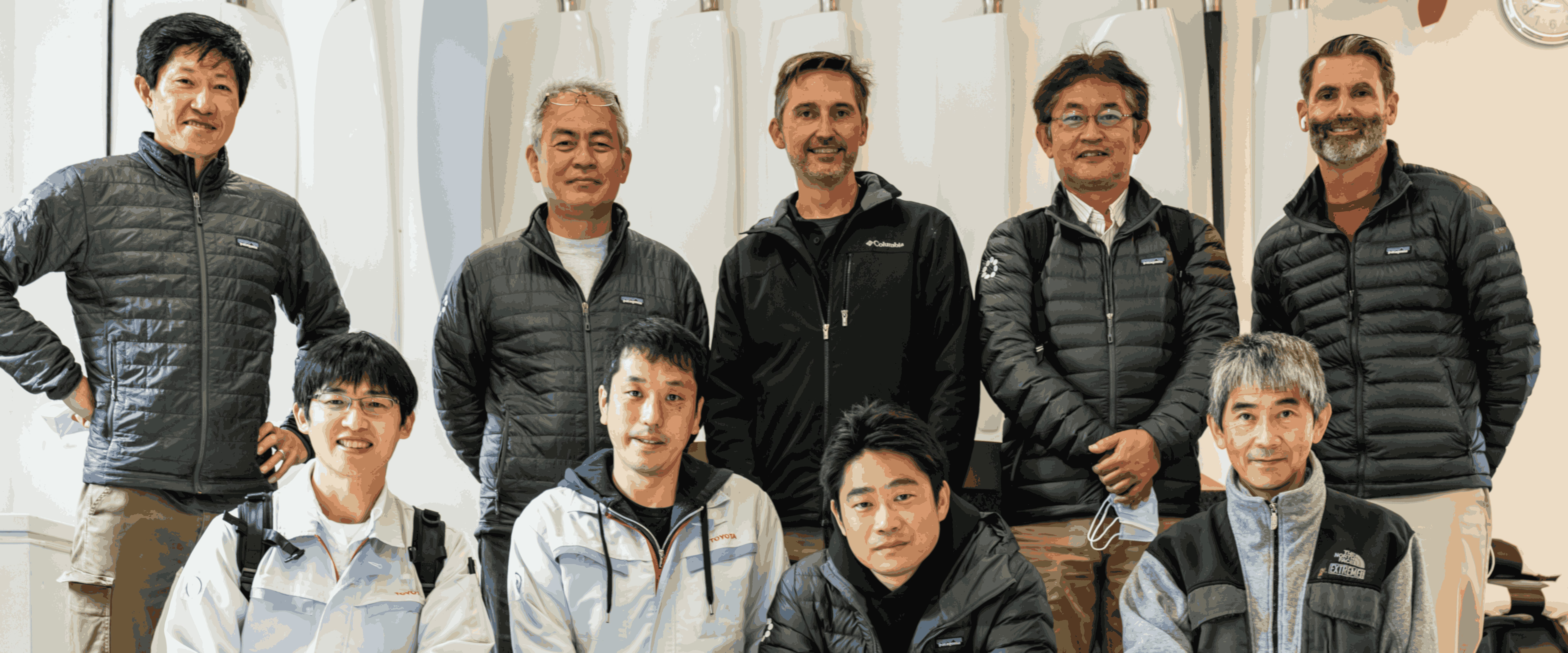We collect cookies. Read our privacy policy. Do you accept?
Jun 04, 2021 — As we prepare for volume manufacturing of our transformative electric aircraft, we’re standing shoulder-to-shoulder with Toyota — the world leader in high-quality, high-volume vehicle production.
In 2019, JoeBen, Paul and the rest of our leadership team traveled to Japan to meet with Akio Toyoda, grandson of Toyota Motor founder Kiichiro Toyoda and current president of the company. Intent on expanding his company from a vehicle manufacturer to a mobility service provider, Akio-san was intrigued by Joby’s vision of aerial ridesharing.
Two summers earlier, Joby’s full-scale technology demonstrator had become the world’s first tilt-rotor electric vertical takeoff and landing (eVTOL) aircraft to successfully demonstrate transition from hover to cruise flight — the culmination of years of hard work and innovative engineering. There was still lots of hard work to be done on aircraft development, testing and certification, but with a successful full-scale prototype in the skies, focus began shifting toward plans for volume manufacturing.
Sakichi Toyoda, founder of Toyota Industries Corporation, is said to have offered a prize of 1 million yen to the inventor of a battery that could store more energy than gasoline — which Toyoda intended to use to power electric aircraft. Credit: Toyota Motor Corporation
For generations, the Toyoda family has dreamed of building flying vehicles, and Akio-san was intrigued by the possibilities of electric flight that Joby sought to create. Akio-san shared our view that the future of transportation would be multi-modal, and it was clear from our conversations that there was a great deal of opportunity for collaboration. Before leaving for the airport, JoeBen and Paul presented Akio-san with a subscale model of our aircraft, which he gave pride of place on the shelf in his office.
Akio Toyoda, president of Toyota Motor Corporation, shares our vision of a future with greater options for mobility that includes the quiet, zero-emissions Joby airplane. Credit: Toyota Motor Corporation
After an initial investment by Toyota Ventures in 2017, Toyota Motor Corporation made a follow-on investment of $44 million in Joby Aviation on Christmas Eve of 2018. This was followed by a further investment of $350 million 12 months later, as Toyota established themselves as a strategic partner and led our Series C financing round.
Our strategic partnership with Toyota is about much more than financial support, though. Following the Collaboration Agreement we entered into in 2019, we have worked directly with teams of Toyota engineers to plan production, design parts, and drive efficiency into our aircraft. With dozens of Toyota engineers - many of whom are now working alongside their Joby counterparts in California - deployed across dozens of collaboration projects, we continue to prepare for manufacturing at scale.
To achieve our vision of saving a billion people an hour a day, we must deliver our aerial ridesharing service at a price point that is increasingly affordable over time. Our ability to steadily drive down end-user pricing depends in part on our ability to produce our aircraft efficiently at high volumes. It is here that Toyota’s mastery in the art of high-quality, high-volume production has proven invaluable.
For example, with Toyota’s help we have been able to streamline our final assembly process and reduce the production footprint of our first factory by more than 100,000 square feet. The result is a factory layout capable of producing the same volume of aircraft in a smaller area at higher speeds and lower cost.
The Toyota team has also designed and custom-built for us production tools that greatly improve installation speeds for notoriously difficult parts, such as one particular electronic component that needs to be installed in a difficult-to-reach area of the aircraft’s tail with almost no direct visibility. What previously took a skilled technician close to an hour — with a low chance of a successful install — can now be safely and consistently installed in just three to four minutes.
Today, the focus of our partnership is on manufacturing, but we see opportunities for collaboration extending across the value chain of our aerial mobility service. Earlier this year, we amended our Collaboration Agreement to contemplate expanded collaboration on areas such as maintenance, repair, service, operations, and other areas that we’re not yet ready to discuss publicly.
With Toyota’s help, we have been able to streamline our final assembly process and reduce the production footprint of our first factory in Marina, California, by more than 100,000 square feet. Credit: Joby Aviation
As the perils of the Covid pandemic hopefully come to an end, we look forward to welcoming more Toyota engineers to our locations across California, many of whom will be making a multi-year relocation to support our ongoing partnership. We thank each and every one of them for their hard work and dedication as we work toward realizing the mutual vision of Joby and the Toyoda family.

